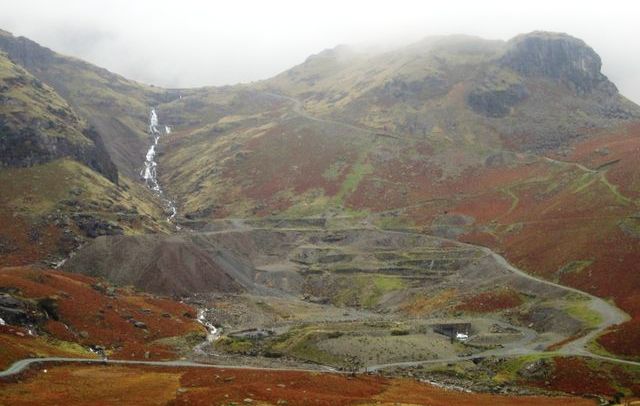
Paddy End Copper Works
© Copyright Graham Robson and licensed for reuse under this Creative Commons Licence
The presence of copper in the Lake District was known before 1563, when the Crown used German expertise and finance to develop mines and smelt the ore. They worked in many places, but their principal mines were in the Caldbeck Fells, at Goldscope (a corruption of God’s Gift) and Coniston.
Operations all-but ended with the civil war (1642-1651) and did not resume because of imports of purer copper from the Stora Kopparberg Mine, near Falun in Sweden. The latter began to fail in the eighteenth century, however, and English miners were thus encouraged to search for sources of ore.
One of the more successful ventures, headed by Charles Roe of the Macclesfield Copper Company, successfully reopened the German workings at Coniston. Despite encouraging result, Roe’s other mine, at Parys Mountain in Anglesey, was doing so well that copper prices fell and he gave up Coniston in 1795.
By 1822 John Taylor, one of Britain’s foremost mining engineers, had formed a company to work at Coniston. John Barratt, who was Taylor’s agent at the Grassington lead mines in Yorkshire and a share holder in the new company, was appointed manager. Until 1834, however, he lived at Grassington, but frequently travelled to Coniston.
They sank Old Engine Shaft to replace Roe’s old shaft in developing the mine below the latter’s workings. Two fairly superficial levels, Taylor’s and Flemings, were also begun from Red Dell Beck to give drainage and access. By December 1825 Taylor’s Level had cut a lode with nearly three feet width solid ore, and a Deep Level was being driven from near the present Youth Hostel.
The mine continued to prosper and get deeper. By 1849 the workings were 165 metres below the Deep Level. As with the lead industry, however, imports of copper, especially from the Iberian copper belt, were making UK mines uneconomic. Most Cornish copper mines were closing, but Coniston kept going until 1897, by which time the workings were over 375 metres under the Deep Level.
Return to previous page
